Transfer Story: Baena. A tale of two cities
Edited on
07 April 2021“It was the best of times, it was the worst oftimes, it was the age of wisdom, it was the age of foolishness, it was the epoch of belief, it was the epoch of incredulity, it was the season of Light, it was the season of Darkness, it was the spring of hope, it was the winter of despair…” The first words of Dickens' universal work can bring us closer to the state of mind in which we have spent the last year in our cities. A mixture of fear and hope, of fragility and resilience, of science and fake news, of solidarity and at the same time of enormous gaps of inequality...
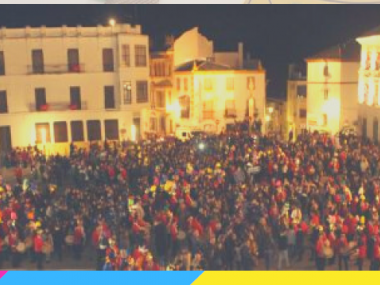
It has not been a century, but a year, but it has marked us, as a society in general and as communities of people living in shared spaces in particular. Because that’s where life happens for its residents, in their cities, it happens in physical places that make up the urban space where we live together. And that is what it was all about, intervening together on urban spaces in adifferent way, so that they were really shared and really alive, when a different time came.
Baena is a small town of 19,000 inhabitants in the south of Spain, with a huge historical and archaeological heritage and fertile lands in its municipal area but, at the same time, with a high level of unemployment, marked social inequalities and a serious problem linked to the depopulation and degeneration of the historic town centre. It could be said that the city is divided in two, and the hill, where the oldest part is located, concentrates the highest percentage of people at risk of social exclusion, ageing population, abandoned houses or areas with problems of crime and drug trafficking. The tendency is to "migrate" to the new part, built on the flatter area, through which the city has spread.

Despite the important public investment made until the beginning of the last decade in order to enhance the value of the old town and its heritage resources, the above mentioned trend has not been reversed but has indeed worsened in rece nt years. Without a transformation from the social point of view of the current dynamic, this division may reach a situation of no return. For its part, the Covid 19 pandemic, with its enormous socio-economic impact added to the terrible human cost, has increase dinequalities, creating new gaps that have made the distance between the two Baena seven greater. In this context, the good practice of Lodz, a Polish city 3,000 km away from Baena, had already lit a light in the political and technical municipal teams when they decided to participate in an URBACT Transfer Network that promoted the incorporation of the social aspect to the urban regeneration processes in a decisive way, through a collaborative city model.This new approach could be an incentive to change an inertia that only aggravates the state of a sick old town and, therefore, of a city that needs to heal as a whole.
nt years. Without a transformation from the social point of view of the current dynamic, this division may reach a situation of no return. For its part, the Covid 19 pandemic, with its enormous socio-economic impact added to the terrible human cost, has increase dinequalities, creating new gaps that have made the distance between the two Baena seven greater. In this context, the good practice of Lodz, a Polish city 3,000 km away from Baena, had already lit a light in the political and technical municipal teams when they decided to participate in an URBACT Transfer Network that promoted the incorporation of the social aspect to the urban regeneration processes in a decisive way, through a collaborative city model.This new approach could be an incentive to change an inertia that only aggravates the state of a sick old town and, therefore, of a city that needs to heal as a whole.
And, what was the story of Lodz? It was also that of a city divided in two, a huge historical centre with a declining industrial past and a growth of new neighbourhoods in concentric circles around it. A centre that was the origin of the city and makes it unique, but which is burdened by problems that require interventions beyond the regeneration of the numerous municipally-owned housing buildings or there development of the streets. And this is where the "mix" that gives its name to the URBACT Urban Regeneration Mix Transfer Network (Uremix) came into play.

Thus, learning from Lodz, the aim was to improve the social dimension in the processes of urban regeneration in Baena through the transfer of this good practice that promotes a collaborative city model, increasing the participation of residents, their equal involvement, and strengthening the relations between the main actors in these processes. Baena, as a city of the Uremix Network, has had the opportunity to study, identify and apply key elements of the success of this practice to try to revitalize its degraded historic centre, involving people and entities to try to highlight the value and the potential of the area and its inhabitants.
Baena through the transfer of this good practice that promotes a collaborative city model, increasing the participation of residents, their equal involvement, and strengthening the relations between the main actors in these processes. Baena, as a city of the Uremix Network, has had the opportunity to study, identify and apply key elements of the success of this practice to try to revitalize its degraded historic centre, involving people and entities to try to highlight the value and the potential of the area and its inhabitants.
This effort has advanced along a path that is not without difficulties, but it has undoubtedly been translated into specificactions, into learning applied to the daily work of the different actors, into new spaces for collaboration, and into questions posed for the future. And this has happened around a main concept: for Baena, the transfer of the good practice of Lodz has consisted of applying all the declensions of the word "mediation" to the participating people, organisations and entities. In this process there was a turning point for the transfer, the second transnational meeting in Lodz, where the two cities shook hands firmly again and finished weaving their stories, proving once more the power of the URBACT philosophy and methodology.
This greater understanding of the potential for learning and transfer resulted in an adaptation of Baena's transfer project to focus on certain elements that are directly connected to the possibilities identified, always with in the framework of the work of the Local Group. In this way, Baena focused on specific points of action in a kind of "regenerative acupuncture" exercise which resulted in urban and social renewal processes to, through small-scale actions, keep alive a local response to the problems in the old town of Baena and the area of La Almedina and La Malena.
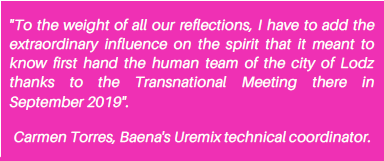
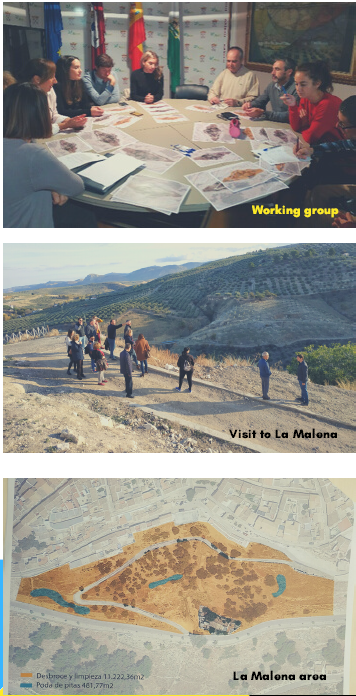
Among other things, the transfer has made it possible to give impetus to a promising relationship between municipal departments which is paving the way for horizontal integration between areas, particularly in the field of urban regeneration, housing and the social approach.On the other hand, by stimulating the role of mediation in relation to urban development interventions, the transfer has also facilitated the testing of simple models of neighbourhood consultation which have oriented the work of the Local Group towards the participatory design of actions in the neighbourhood, such as the improvement of the landscape and the adaptation of the uses of the natural space of La Malena, neighbouring the Almedina district and of great symbolism in the city, but which had not been valued due to problems of vandalism, illegal waste disposal or insecurity. In relation to this pilot project, specific working groups were created within the Local Uremix Group to intervene in the different aspects of the action that could end up creating the third large parkin Baena and new resources for the residents of the area and the whole city.
In addition, and motivated by the impact ofthe pandemic, also through the role of mediation and the promotion of the Local Group, a cooperation between the municipal social services and an educational centre, the neighbourhood school, was set up through the co-design of an action against educational and social in equalities and their impact on the children of La Almedina, with the participation of the municipal social mediators and young trainers committed to the area, and of the neighbourhood association.


Along the way, elements from the practices of other cities in the Uremix network were also incorporated into the transfer, such as social innovation applied to participatory methodologies (Braga) or the potential of culture for urban regeneration (Bologna).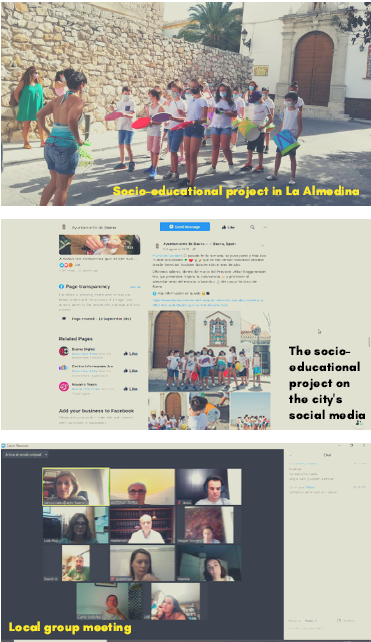
Finally, and perhaps most importantly, the transfer of the Urban Regeneration Mix has encouraged the joint participation of public decision makers, technical municipal managers and social and private actors. All now feel expressly committed to the continuity of the Local Group, as they have expressed in the evaluation of their participation, and their role in promoting urban regeneration actions from a social approach that can be co-designed in a participatory manner, with the help of mediation at all levels. In fact, there are already actions underway and proposals that go beyond the time frame of Uremix. From the perspective of regenerative acupuncture, and with the support of the municipal government, the Local Group hopes to continue taking steps that can contribute to the eventual co-design and approval of a new global and consensual strategy for the historic centre.
However, and despite the positive assessment of all the members of the Local Group, the Uremix transfer in Baena has not been free of problems, from technical to political, with the added challenge of trying to achieve full citizen participation in this type of process in a context of weak civic and associative fabric.
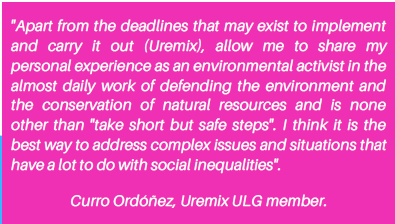
Thus, at the beginning, the integration of the practice of the Uremix project in the technical work of the municipal areas concerned proved to be complex and required a process of learning and adaptation, adding to these difficulties the end of the contract for the technical staff responsible for the transnational part of the project. In parallel to this situation, the result of the municipal elections which took place in May 2019 led to a change of government in Baena, which meant the continuation of a period of suspension of several months for the project, to finally decide on its “revival” in september 2019, including the incorporation of a non-profit territorial organisation with long experience
in European projects into the coordination team. However, the biggest challenge awaiting Uremix in Baena was still to come: the Covid-19. Despite all the difficulties it finally did not mean a total paralysis of the project but rather an adaptation to the new reality in which it also found a new space, as mentioned above, for the transfer of good practice.
It should be noted that a central element of the transfer, the regenerative role of mediation in the cities, was key to overcome these difficulties and to take advantage of the enormous potential of the URBACT projects and their methodology. URBACT is part of the solution, as it has proved in this case. The exchange between cities, the learning, the training, the support provided by a European network of cities, with strong support from the lead partner and the Uremix expert, the context of facilitation, knowledge and quality management created by the URBACT
Secretariat... all this has helped and motivated all the people who have been involved in one way or another in the transfer of the good practice of Lodz at local and European level. It has inspired them to want to be part of a process that will make Baena a better city with the help of the recipe of Lodz: a collaborative city that intervenes on the urban space together with the people who live there, in an exercise of meeting each other guided by mediation.
And, without a doubt, Baena needs to reconcile its two halves to become a better city, and recover the immense value of its origin, its old town, for a future with more light and less darkness.

Submitted by n.rydlewska on
